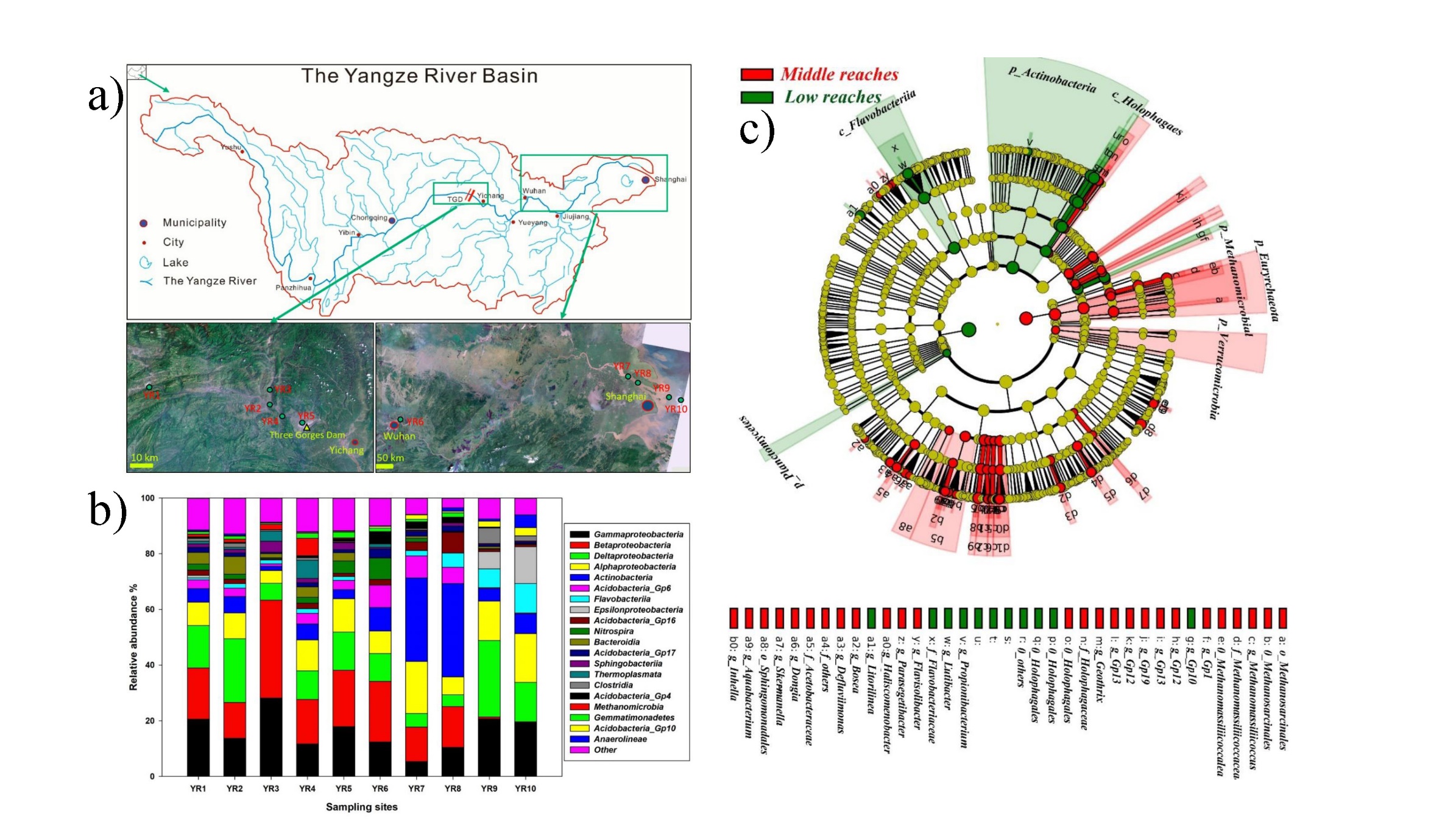Editor: 邵丹蕾 Author: Time: 2019-08-20 Number of visits :125
Impact of anthropogenic organic matter on the distribution patterns of sedimentmicrobial community from the Yangtze River, China
Kai Zhang 1,3, Ding He 1, 2, *, Xingqian Cui 4, Daidu Fan 5, Shangbin Xiao 6, Yongge Sun1
1Institute of Environmental and Biogeochemistry (eBig), School of Earth Sciences, Zhejiang University, Hangzhou, Zhejiang 310027, China
2 State Key Laboratory of Satellite Ocean Environment Dynamics, Second Institute of Oceanography, Ministry of Natural Resources, Hangzhou 310012, China
3 Research Center for Biomedical Information Technology Shenzhen Institutes of Advanced Technologies, Chinese Academy of Sciences, Shenzhen 518055, China
4Department of Earth, Atmospheric and Planetary Science, Massachusetts Institute of Technology, Cambridge, Massachusetts 02139, USA
5State Key Laboratory of Marine Geology, Tongji University, Shanghai 200092, China
6College of Hydraulic and Environmental Engineering, China Three Gorges University, Yichang, Hubei 443002, China
Corresponding at D. He (dinghe@zju.edu.cn).
Abstract
How microbes respond to substantial and increasing anthropogenic disturbance remains an open question in large anthropogenically perturbated river systems. We tested the hypothesis that the source and distribution of anthropogenic organic matter (OM) were significant factors affecting the spatial variation of the bacterial and archaeal community composition in the sediments of middle and lower reaches of the Yangtze River. Bulk geochemical proxies and lignin phenols suggested a general decrease of terrestrial C3 plants or soil OM input from the middle (YR1-YR5) to the lower reaches (YR6-YR10). Fecal sterols inferred higher sewage contamination levels in the middle than lower reaches. Polycyclic aromatic hydrocarbons (PAHs) distribution indicated a dominant biomass and coal combustion signal in the middle reaches, whereas a mixed source from petroleum combustion and biomass and coal combustion in the lower reaches. Phylogenetic analysis revealed a large portion of Methanobacteria (2.6% ± 0.4%) and Verrucomicrobia (1.6% ± 1.0%) enriched at the middle reach sites, whereas OM-degrading bacteria, including Flavobacteria (4.9% ± 0.8%), Acidobacteria (4.5% ± 0.8%), and Alphaproteobacteria (13.0% ± 1.1%)were dominant at the lower reach sites. Quantitative PCR analyses confirmed that the alkanes and PAHs degrading groups were more enriched at the middle reach sites. Multivariate analysis demonstrated that sources and distribution of OM had combined effects in shaping alpha and beta-diversity of sediment microbial communities. Fecal sterols and PAHs that usually track sewage discharge and incomplete OM combustion, respectively, were found to play significant roles in microbial community distribution and were directly associated with Methylococcaceae, Chloroflexi, and Bacteroidetes groups. Overall, this study provides a foundation for further understanding of the river sediment microbial composition, considering the continued increase of global anthropogenic influences.
 Figure 1. Impact of anthropogenic organic matter on the distribution patterns of sediment microbial community from the Yangtze River, China
Figure 1. Impact of anthropogenic organic matter on the distribution patterns of sediment microbial community from the Yangtze River, China
